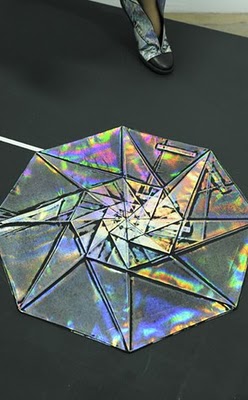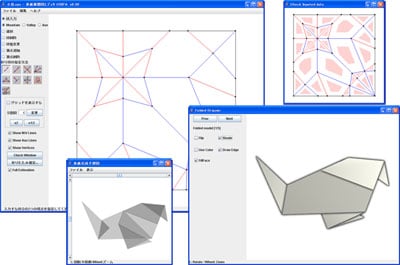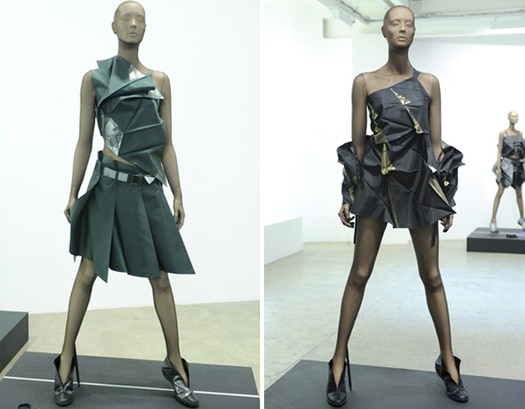
Photo: Folded fabric, ready to enter the third (and fifth) dimension. Photo from Women »s Wear Daily.
Source: changeobserver.designobserver.com
…
How are new design tools and software changing design of clothes and fashion accessories?
As we are always interested in exploring the boundaries of architecture and 3D design, we have found that some fashion designers may use the same softwares that we use in HDA.

For example, you can try and play with an origami pattern design tool called ORIPA, made by Jun Mitani (his blog here) and then discover that Japanese designer Issey Miyake used theory of origami to build his Folded Clothes, which consist of « one piece of fabric, a three-dimensional shape reduced to two, and the fifth dimension, which Miyake describes as the moment the garment is worn and comes to life “through the communication among people.” (In physics, the fifth dimension is a hypothetical extra dimension after the three nbso online casino reviews spatial ones and the fourth, which is time. Some astrophysicists argue that the fifth dimension may be the universe that we live in.) »
(source: changeobserver.designobserver.com)

Image above : neo-nomad.net
…


Images above : changeobserver.designobserver.com
…
This reminds the project below called Digital Portraits, where « Three people are portrayed by turning their 3D data into 2D sewing patterns and converting these into articles of clothing. Linked with their biographical memories, a digital twin of the body is created. »


Images above: Today and Tomorrow
…
We can also find another interesting connection between these concepts and the idea of eco-effiectiviy.
Refinity explains that « the fashion industry is one of the most polluting industries in the world. Everybody participates in the fashion industry and has the opportunity to make it more environmentally friendly. An important strategy to work environmentally friendly is eco-efficiency. This means as that is as efficient as possible, in which more is done with less. This is a good start, but not the solution. […] »Designers should think about the new life of a product during the design process, which will make materials upcyclable. This is eco-effectivity; taking into account the effects of certain design choices on the environment. »
Refinity defines itself as a consultancy company for eco-effective ways of designing fashion (photos below).


…
The document below contains some research we have been exploring for DFS facade design workshop in which we have worked with textures, geometry of origami and complex folded surfaces.
Fashion Design and Complex (Un)Folded Geometries
4,5K
previous post
